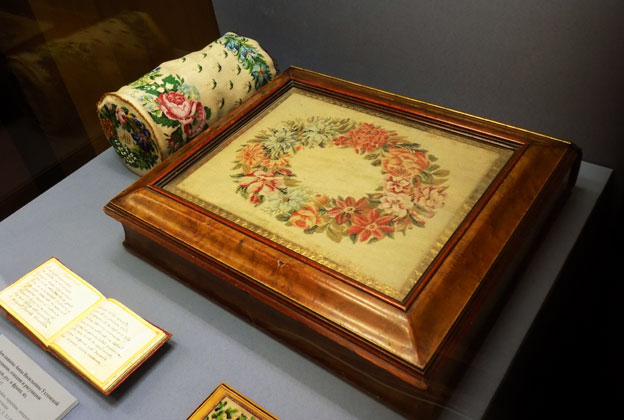An exhibition dedicated to floral symbolism “Ars botanica. Plant motifs in the art of the first half of the XIX century” is taking place at State Historical Museum. After the exhibition the floral ornaments will be filled with philosophical meaning and poetic content.
There is a marvelous rose:
before the eyes of surprised Kythira
it Blooms and lushes,
And blessed by Venus.
A.Pushkin («There is a marvelous rose…»)
The first half of the XIX century was the age of secret societies, which changed the map of political life in Russia and globally. Secret societies in Russia were tried to change the political course of the country. “Union of Salvation”, “Prosperity Union” and “Society of United Slavs” are well-known. The Italians became independent and rejoined with the help of the society “Young Italy”, through “Filiki Etheria” the Greeks gained freedom…
The aristocracy thought with hints, secret signs and symbols that gave it sublime and safety for censorship to communicate with each other. Poems of A. S. Pushkin, M. Y. Lermontov, V. A. Zhukovsky and many other poets use flowers as one of the secret languages, a form of allegory, which is introduced at the exhibition. This language told about love and not about it only.
His wife surprised my eyes with beauty;
She was playing with a happy baby
She intertwined his dark curls with cornflowers,
and also with yellow spikes and red flowers.
I.Kozlov (“The Reapers”)
An appeal to the language of flowers was closely connected with another hobby of the elite – to the antiquity.
Floral etiquette was associated with the attributes of ancient gods and heroes. The flower anemone was born from the blood of Adonis, interwoven spikes raised the cult of the goddess of fertility Ceres.
In the Historical Museum we see the household items of Empress Alexandra Feodorovna, wife of Emperor Nicholas I and Queen of fashion (her personal diaries with floral drawings, the herbarium, the leaves of the album).
Flowers filled the elite life. In “Ladies ‘ magazine” of Prince Shalikov we can see reviews of vintage images of ladies on floral themes. Colors encode the initials of the owners in their boxes (“villages”), they were represented in the albums, decorated fans, ball gowns and head dancers, and even a yarmulke…

“Selam, or the Language of flowers” was the title of a book by Russian poet D. P. Oznobishin (1830), in which he talked about more than 400 plant characters. Books dedicated to flowers, are also on display.
Floral motifs were widely used in the needlework (embroidery) and jewelry.
A total of more than 100 items of the highest quality presented at the exhibition in the Historical Museum, which will be opened until April 3, 2017.
In addition to items from the collection of the Museum, objects from the private collections of J. D. Gurewitsch and E. A. Malinko are exhibited too. Also at the exhibition you can see the work of contemporary jewellery house Anna Nova, based on the tradition of art of the XIX century.





